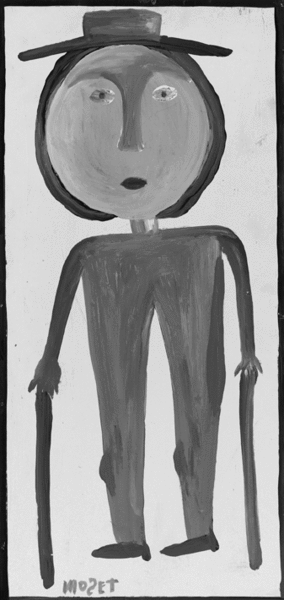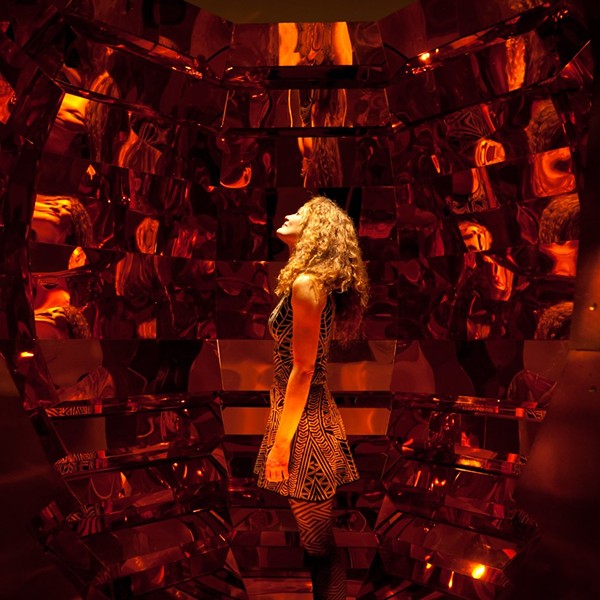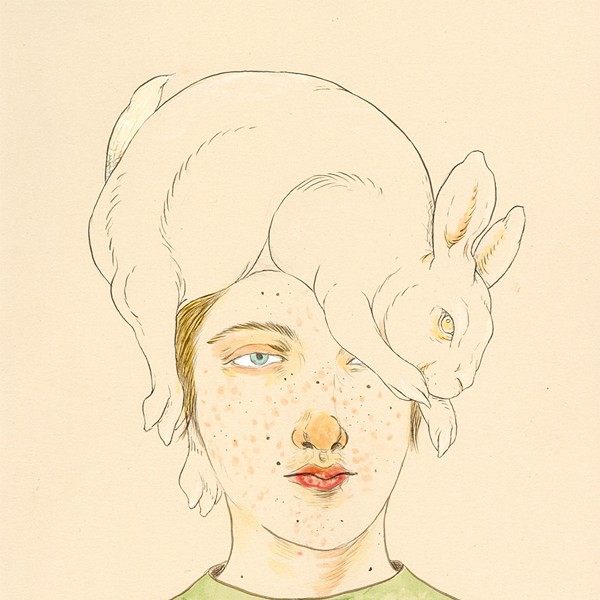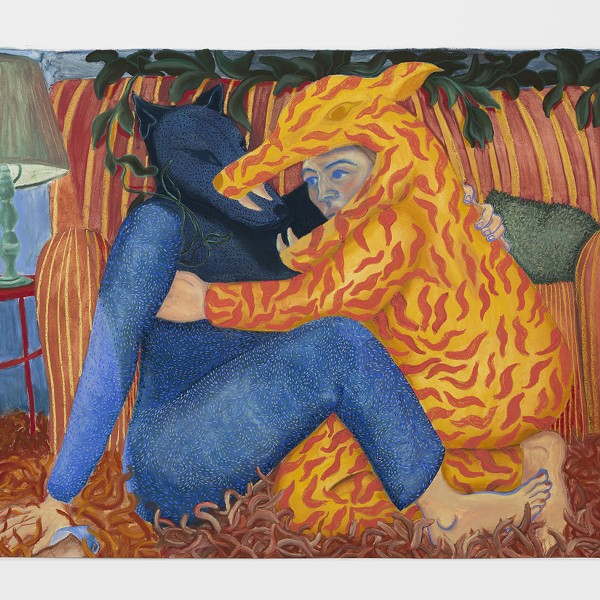
“Outsider” is often a literal term. Many such artists actually make their works outdoors. In 1976, Howard Finster (1916-2001) was patching a bicycle wheel in Summerville, Georgia, when a voice came to him saying: “Paint sacred art.” Eventually Finster built Paradise Garden, a huge display in his backyard based on the Garden of Eden, which is still a tourist attraction. Finster created album covers for R.E.M. and Talking Heads, and appeared on Johnny Carson’s “The Tonight Show.”
“Faith and Fantasy” includes Finster’s Coke Bottle (1989), a painting in the shape of a Coca-Cola bottle, filled with images and such phrases as “The Top Is as High as You Can Go/Endless Circle/Mr. Coke” and “If Any One Has a Better Drink Than Coke They Must Have Kept It for Themselves I Haven't Found It Yet.”
Inez Nathaniel Walker (1911-1990) was an “insider” in one sense—she was imprisoned for homicide at Bedford Hills Correctional Center in Westchester. While in prison, Walker began drawing portraits of women, alone or in pairs, with elaborate decorative flourishes.
John “Jack” Savitsky (1910-1991), also known as Coal Miner Jack, worked in the mines in Pennsylvania. When Savitsky lost his job in 1959, his son suggested he take up painting, and he responded: “What the hell, why not?” Savitsky documented the lives of miners, but also made dreamy works such as Untitled Adam and Eve (circa 1973) in the current show.
“Even though most of these artists have never met—they certainly didn’t go to the same art school!—there are themes that all of them are going to,” Nicole M. Roylance of the Loeb Art Center notes. “Particularly, Adam and Eve come up again and again and again.” The show will be in three sections, based on the themes of religion, fantasy, and everyday life.
The emergence of the outsiders connects to issues in the contemporary art world; that is, if a large sack of Vaseline is art, why isn’t a handcarved cane in the shape of the angel Raphael? In fact, outsider art in many ways is closer to the traditions of Western art, which has its roots in Christianity and portraiture.
Pat Parsons, co-founder of the Web and Parsons Gallery in Bedford, was an early supporter of self-taught artists. In 2006 she gave over 100 pieces of outsider art to the Loeb Art Center as a seed collection, in the hopes of attracting other donors. More than 50 of the works will be on view in this show. Parsons graduated from Vassar in 1951.
The opening reception on February 13 will include the lecture “Through the Lens of Language: Self-Taught Artists from Dubuffet to Today” by Brooke Davis Anderson of the American Folk Art Museum, at 5:30pm.
“Faith and Fantasy in Outsider Art from the Permanent Collection” will be shown at the Frances Lehman Loeb Art Center at Vassar College in Poughkeepsie from February 13 through April 26. (845) 437-5632; www.fllac.vassar.edu.















